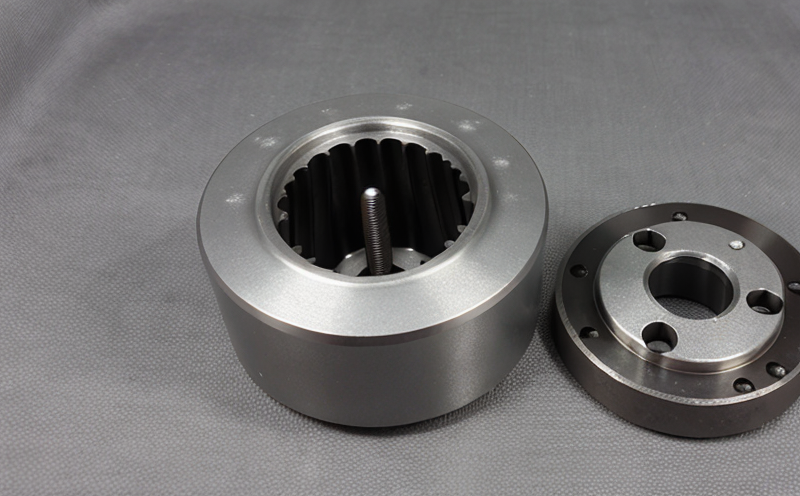ASTM E3 Preparation of Metallographic Specimens (Powder Metallurgy)
The ASTM E3 standard provides a comprehensive guide for preparing metallographic specimens, which are essential in the examination and characterization of microstructures within materials. In powder metallurgy, this method is vital to ensure that the resulting parts meet stringent quality standards and performance requirements.
ASTM E3 outlines various steps that include sample selection, cutting, polishing, etching, and final preparation for microscopic analysis. These procedures are critical in revealing the microstructural features of materials such as iron-based alloys used in powder metallurgy processes. The process begins by selecting a representative sample from the material batch or part under examination. The selected specimen is then carefully cut using specialized tools to obtain a flat surface that will be exposed to further treatment.
The cutting step must be precise and free of contamination to avoid altering the microstructure, which could lead to inaccurate interpretations during subsequent analyses. Following this, the sample undergoes extensive polishing with progressively finer abrasives to achieve a mirror-like finish. This process is crucial as it ensures that light can pass through the specimen uniformly without reflection, enhancing visibility under the microscope.
Once polished, etching follows where an appropriate solution is applied to selectively remove parts of the metal surface, highlighting different phases or regions within the material microstructure. The choice of etchant depends on the type of alloy and its intended application, ensuring that critical features are clearly visible for detailed examination.
The final step involves drying and cleaning the specimen before placing it in a suitable container ready for inspection under a metallographic microscope. This meticulous preparation allows metallurgists to accurately assess grain size, phase distribution, porosity levels, and other important characteristics essential for quality assurance and process optimization.
- Accuracy of sample selection
- Precision cutting techniques
- Progressive polishing methods
- Selective etching solutions
- Detailed drying and cleaning procedures
The ASTM E3 method ensures that all these steps are followed rigorously, providing reliable data used not only in quality control but also in research and development activities aimed at improving powder metallurgy products.
Eurolab Advantages
At Eurolab, we pride ourselves on offering unparalleled expertise in material testing services. Our advanced facilities and state-of-the-art equipment enable us to provide accurate and reliable results consistently. With years of experience serving clients across various industries, including automotive, aerospace, and manufacturing sectors, our team is well-versed in handling diverse materials and complex samples.
One of the key advantages of choosing Eurolab for ASTM E3 preparation lies in our commitment to quality assurance. We adhere strictly to international standards such as ISO 9001 and ASME Section VIII to ensure that every test conducted meets the highest industry benchmarks. Our experienced technicians use cutting-edge technology like automated polishing machines and advanced etching techniques to guarantee consistent specimen preparation.
Additionally, Eurolab offers flexible service options tailored to meet individual client needs. Whether you require single-time testing or ongoing support with regular inspections, our dedicated staff is always available to assist. We also provide detailed reports complete with high-resolution images captured during the preparation process, ensuring transparency and ease of interpretation for stakeholders involved.
By partnering with Eurolab, organizations benefit from access to highly trained professionals who understand both technical aspects and business implications associated with material testing. This ensures that clients receive not just accurate results but actionable insights derived directly from our findings.
Why Choose This Test
- Compliance Assurance: Ensures adherence to strict industry standards, enhancing trustworthiness of your products or services.
- Innovation Support: Helps identify areas for improvement through detailed analysis of material properties and structures.
- Quality Control: Guarantees high-quality output by identifying defects early in the production cycle.
- Risk Mitigation: Reduces potential failures due to poor quality or design flaws, saving costs associated with rework or warranty claims.
- Regulatory Compliance: Meets regulatory requirements across multiple jurisdictions, streamlining compliance efforts for multinational companies.
- Competitive Advantage: Demonstrates commitment to excellence, differentiating your offerings from competitors in the market.
- Customer Satisfaction: Builds long-term relationships by consistently delivering products that meet or exceed expectations.
- Educational Value: Provides valuable learning opportunities for staff involved in R&D projects or quality assurance processes.
Selecting ASTM E3 preparation is therefore a strategic decision that supports broader business goals while ensuring product integrity and customer satisfaction.





